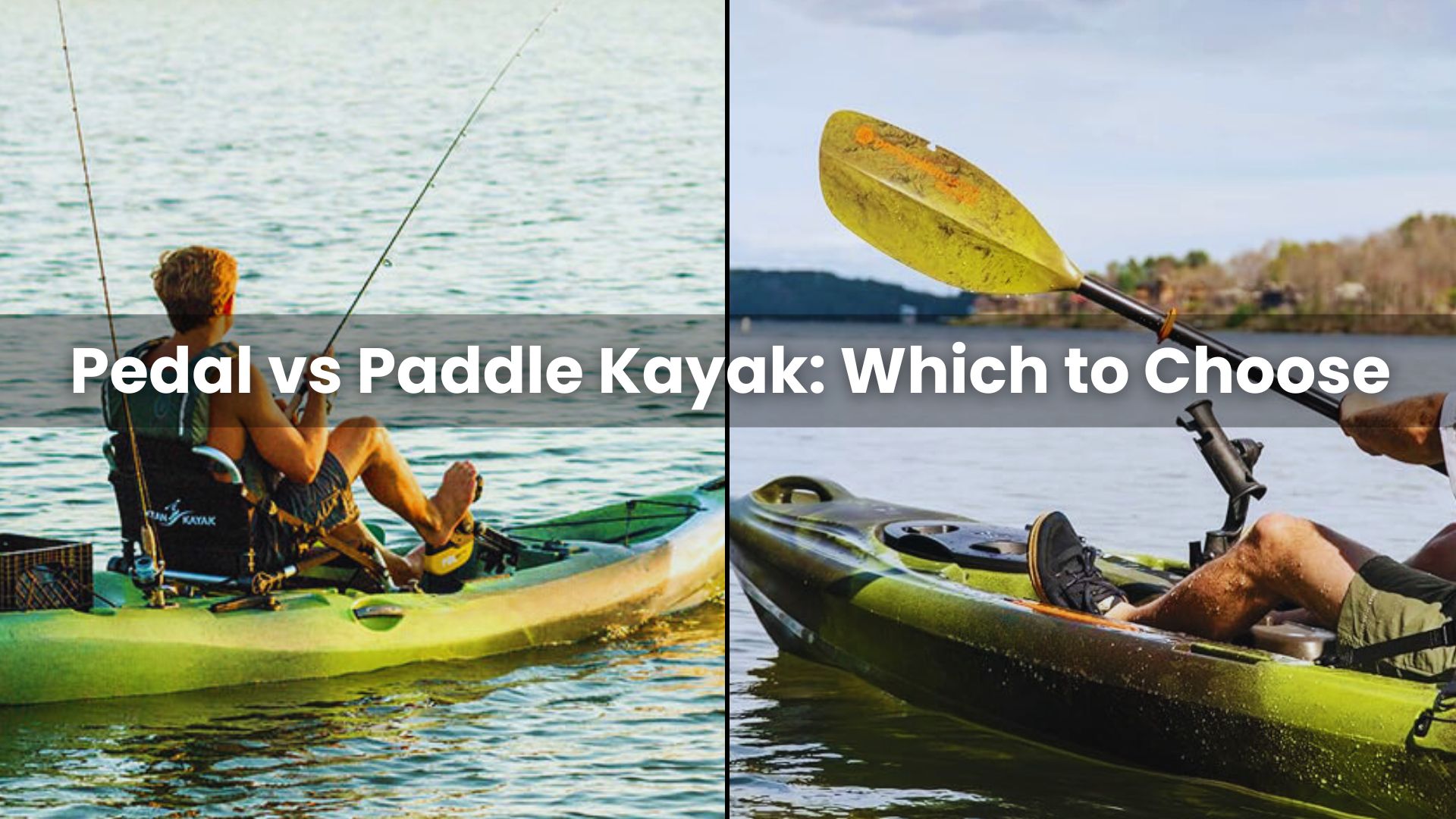When it comes to exploring the serene waters and embarking on thrilling adventures, the choice between a pedal vs paddle kayak can significantly impact your kayaking experience.
Understanding the differences between these two propulsion systems is crucial for selecting the right kayak that aligns with your preferences and needs.
In this comprehensive guide, we will delve into the world of pedal vs paddle kayaks, exploring their unique features, advantages, and considerations to help you make an informed decision for your next aquatic escapade.
Whether you seek the speed and efficiency of a pedal kayak or the traditional charm of a paddle kayak, this article will equip you with the knowledge to navigate the waters with confidence and enjoyment.
- What is a Pedal Kayak?
- What is a Paddle Kayak?
- Key Differences Between Pedal and Paddle Kayaks
- Factors to Consider When Choosing Between Pedal and Paddle Kayaks
- Pros and Cons of Pedal vs Paddle Kayaks
- Which is Better: Pedal or Paddle Kayak?
- What are the Advantages and Disadvantages of Pedal and Paddle Kayaks
- What are the Key Differences in Terms of Speed Between Pedal and Paddle Kayaks
- What are the Most Popular Brands of Pedal and Paddle Kayaks
- Conclusion
- Frequently Asked Questions About Pedal vs Paddle Kayaks
- What are the advantages of a pedal kayak over a paddle kayak?
- What are the advantages of a paddle kayak over a pedal kayak?
- Which type of kayak is better for fishing, a pedal or paddle kayak?
- How do the maintenance and repair requirements differ between pedal and paddle kayaks?
- What factors should I consider when choosing between a pedal or paddle kayak?
- Is one type of kayak generally more expensive than the other?
What is a Pedal Kayak?
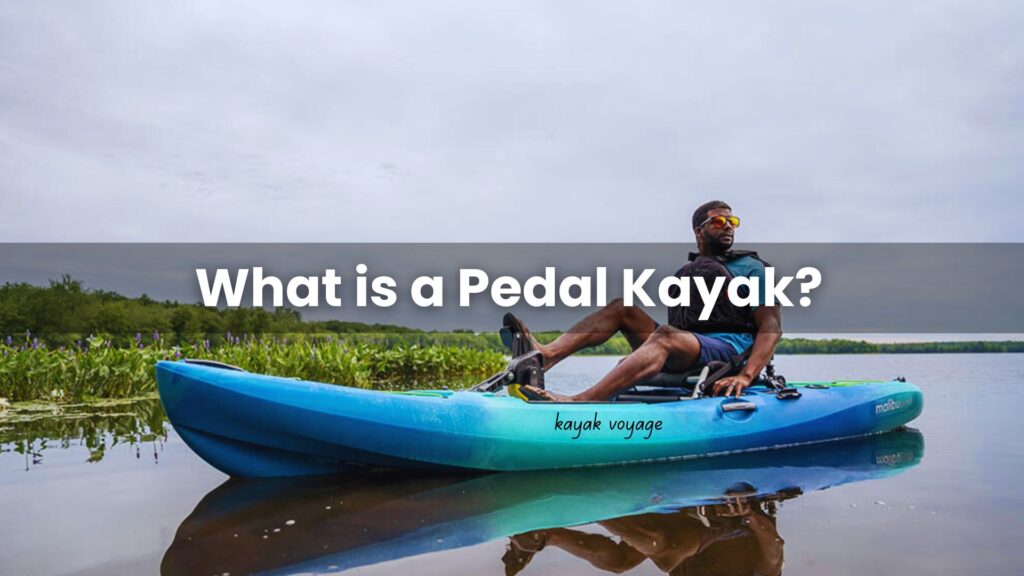
A pedal kayak, also known as a pedal-powered kayak, is a unique type of kayak that utilizes a pedal-driven propulsion system instead of the traditional paddle. This innovative design allows the kayaker to propel the boat forward by using their legs and feet, rather than relying solely on the upper body strength required for paddling.
The pedal mechanism in a pedal kayak is typically located in the center of the boat, allowing the kayaker to sit in a comfortable, reclined position and use their legs to turn a set of pedals that are connected to a propeller or other underwater drive system. This hands-free approach to kayaking offers several advantages, including increased speed, reduced physical strain, and the ability to multitask while on the water.
Pedal kayaks come in a variety of styles and designs, each with its own unique features and capabilities. Some models are equipped with advanced features like rudder systems, adjustable seats, and even built-in storage compartments, making them versatile and well-suited for a wide range of kayaking activities.
What is a Paddle Kayak?
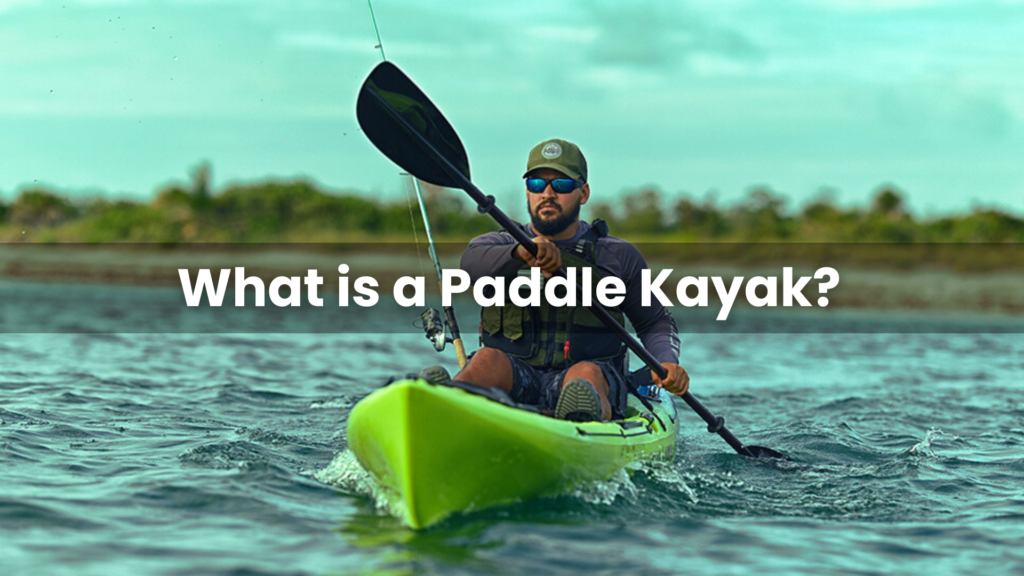
In contrast to pedal kayaks, a paddle kayak is the traditional and most widely recognized type of kayak. These kayaks rely on the use of a double-bladed paddle to propel the boat through the water. Paddle kayaks come in a wide range of sizes, shapes, and designs, each tailored to specific water conditions, paddling styles, and personal preferences.
The paddle is the primary means of propulsion in a paddle kayak, and mastering proper paddling techniques is essential for efficient and comfortable kayaking. Paddlers use a combination of strokes, such as the forward stroke, the reverse stroke, and the draw stroke, to navigate their kayaks with precision and control.
Paddle kayaks offer a more hands-on and immersive kayaking experience, allowing paddlers to feel a direct connection with the water and the surrounding environment. They are often praised for their maneuverability, versatility, and the physical challenge they provide, making them a popular choice for recreational, touring, and whitewater kayaking.
Key Differences Between Pedal and Paddle Kayaks
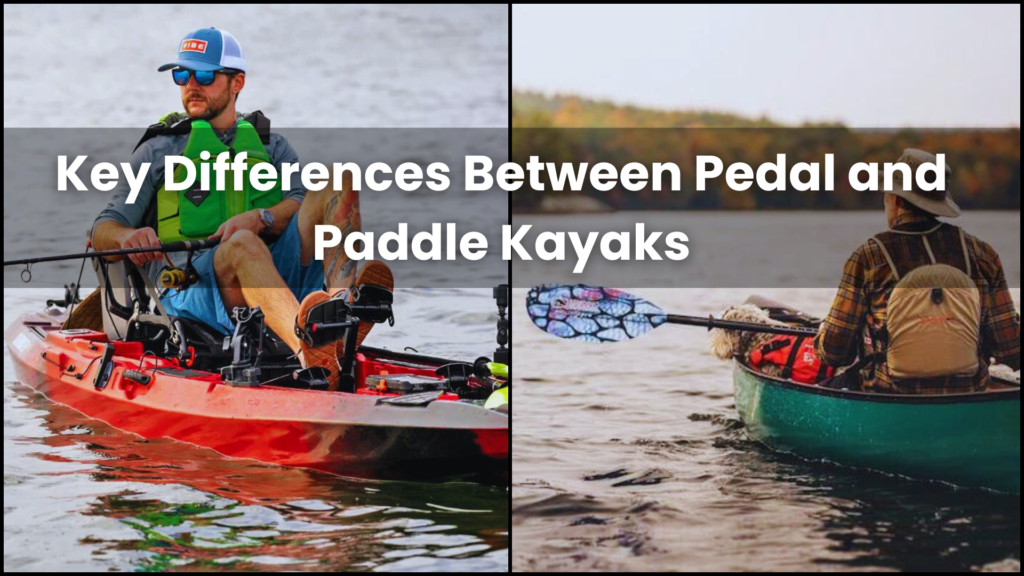
When it comes to the differences between pedal and paddle kayaks, several key factors come into play:
Speed and Efficiency
Pedal kayaks are generally faster and more efficient than paddle kayaks, as the leg muscles are typically stronger and more powerful than the arms. This allows pedal kayaks to maintain higher speeds with less physical exertion, making them well-suited for longer journeys and open-water exploration.
Maneuverability and Control
Paddle kayaks tend to have a slight edge in terms of maneuverability and control, particularly in tight spaces or when navigating through obstacles. The direct connection between the paddle and the water provides paddlers with a greater sense of responsiveness and the ability to make quick, precise turns.
Physical Exertion and Comfort
Paddle kayaking requires more upper body strength and can be more physically demanding, especially on longer trips. Pedal kayaks, on the other hand, distribute the workload to the legs, which are generally stronger and more enduring, resulting in a more comfortable and less strenuous paddling experience.
Maintenance and Repair
Pedal kayaks often have more complex mechanical systems, such as the pedal-driven propulsion mechanism, which can require more maintenance and specialized repairs compared to the relatively simple design of paddle kayaks.
Factors to Consider When Choosing Between Pedal and Paddle Kayaks
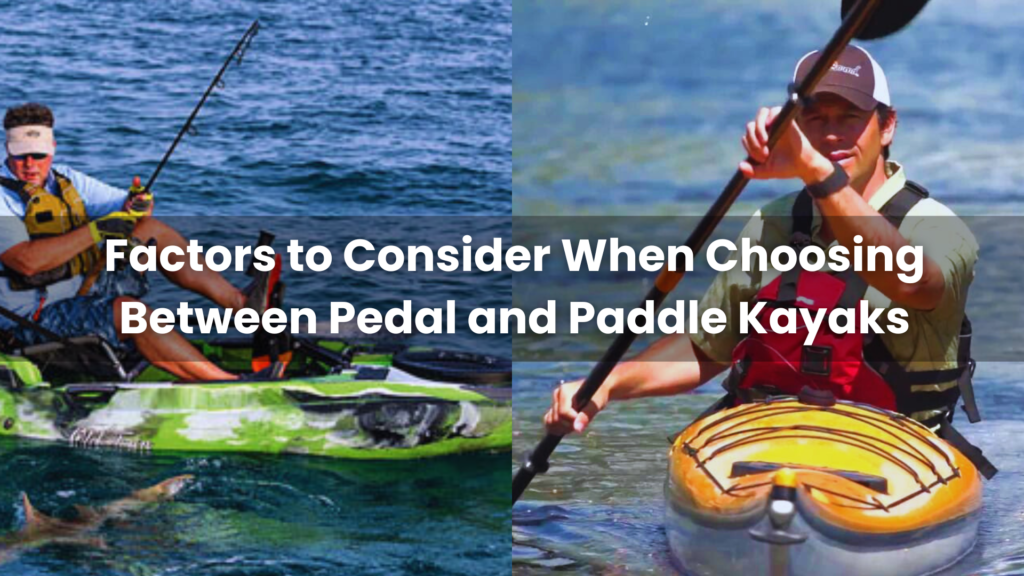
When deciding between a pedal kayak and a paddle kayak, there are several key factors to consider:
Water Conditions
The type of water you’ll be kayaking on can greatly influence your choice. Pedal kayaks may be better suited for open water, lakes, and slow-moving rivers, where their speed and efficiency can be fully utilized. Paddle kayaks, on the other hand, often excel in tighter, more technical waterways where maneuverability is crucial.
Personal Preference and Comfort
Your personal preference and comfort level with each propulsion system can play a significant role in your decision. Some kayakers may prefer the hands-free experience of a pedal kayak, while others may find the traditional paddling motion more natural and enjoyable.
Budget Considerations
Pedal kayaks tend to have a higher initial cost compared to paddle kayaks, due to their more complex design and additional mechanical components. If budget is a primary concern, a paddle kayak may be the more affordable option.
Storage and Transportation
The size and weight of the kayak can also be a factor, especially if you need to transport it frequently or store it in a limited space. Paddle kayaks are generally lighter and more compact, making them easier to maneuver and store.
Skill Level and Experience
Your skill level and experience in kayaking can also influence your choice. Beginner kayakers may find a paddle kayak more intuitive and easier to learn, while experienced paddlers may appreciate the added speed and efficiency of a pedal kayak.
Pros and Cons of Pedal vs Paddle Kayaks
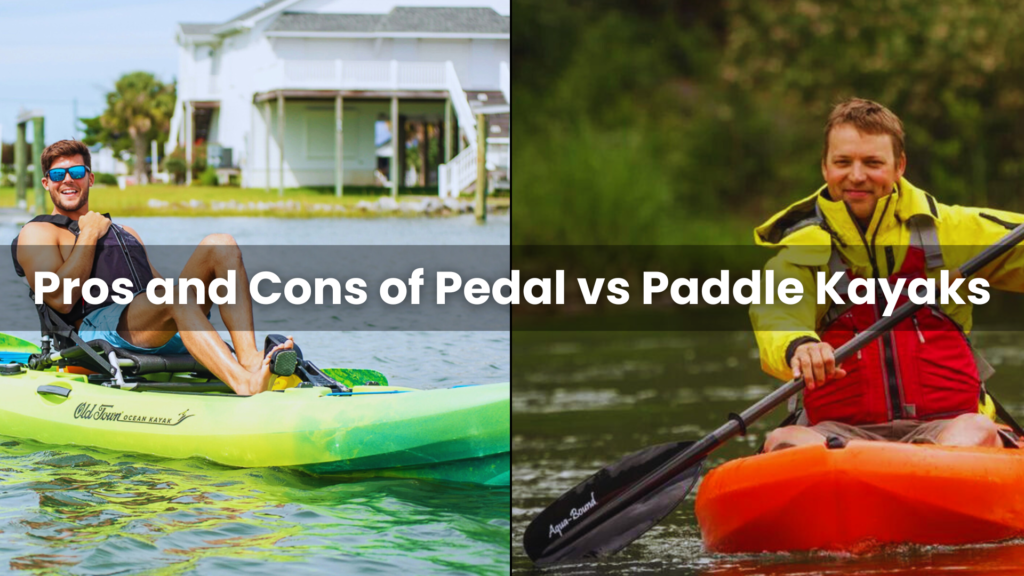
Pros of Pedal Kayaks
Hands-Free Operation: One of the primary advantages of pedal kayaks is the hands-free operation they offer. This allows kayakers to fish, take photos, or simply relax without the need to constantly hold a paddle.
Increased Speed and Efficiency: Pedal kayaks are known for their speed and efficiency, thanks to the leg muscles being stronger and more enduring than the arms. This can be particularly beneficial for covering long distances or navigating open waters.
Less Physical Strain on Legs and Back: The pedal-driven propulsion system in pedal kayaks reduces the strain on the upper body, making them a more comfortable option for those with back or shoulder issues.
Cons of Pedal Kayaks
Higher Initial Cost: Pedal kayaks typically come with a higher price tag compared to paddle kayaks, due to their more complex design and mechanical components.
Limited Maneuverability in Shallow Waters: The design of pedal kayaks can limit their maneuverability in shallow or rocky waters, where a paddle kayak may be able to navigate more easily.
Maintenance and Repair Complexities: The mechanical components of pedal kayaks may require more maintenance and specialized repairs, adding to the overall cost and upkeep of the kayak.
Pros of Paddle Kayaks
Traditional Kayaking Experience: Paddle kayaks offer a traditional kayaking experience that many paddlers appreciate for its simplicity and direct connection with the water.
Greater Maneuverability in Tight Spaces: Paddle kayaks excel in tight spaces and technical waterways, allowing paddlers to make quick turns and navigate through obstacles with precision.
Lower Initial Cost: Paddle kayaks are generally more affordable than pedal kayaks, making them a budget-friendly option for beginners or casual kayakers.
Cons of Paddle Kayaks
Requires Physical Effort: Paddling a kayak requires upper body strength and can be physically demanding, especially on longer trips or in challenging conditions.
Slower Speed Compared to Pedal Kayaks: Paddle kayaks are typically slower than pedal kayaks, as they rely on arm strength rather than the more powerful leg muscles for propulsion.
Potential for Fatigue on Longer Trips: Paddling for extended periods can lead to fatigue in the arms and shoulders, which may impact comfort and performance on longer kayaking excursions.
Which is Better: Pedal or Paddle Kayak?
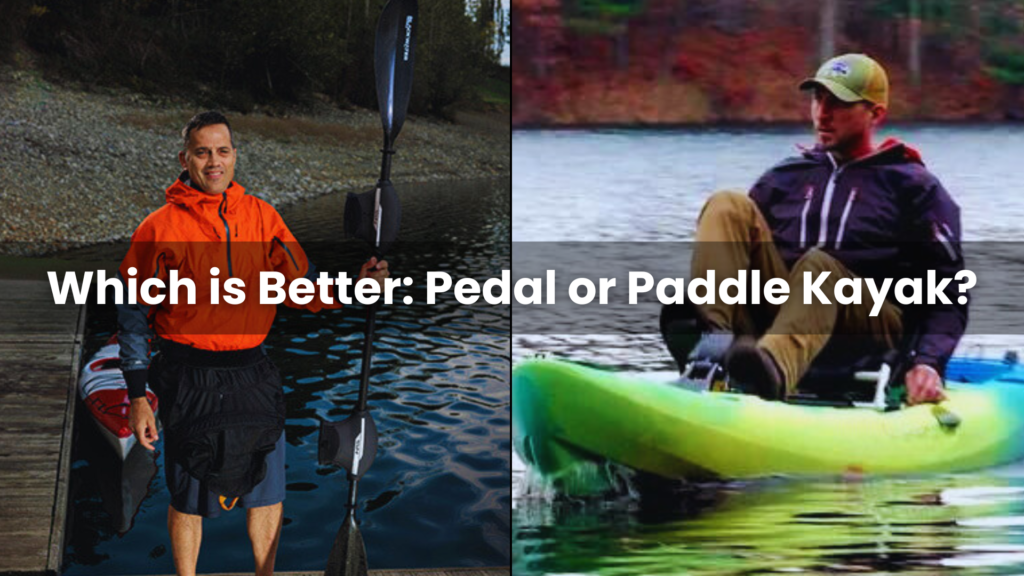
The age-old question of whether a pedal kayak or a paddle kayak is better ultimately comes down to personal preference, intended use, and individual needs. Both types of kayaks offer unique advantages and considerations, making them suitable for different kayaking scenarios and preferences.
For those seeking speed, efficiency, and a hands-free experience, a pedal kayak may be the ideal choice. On the other hand, paddlers who value maneuverability, tradition, and a more physical paddling experience may find a paddle kayak to be more fulfilling.
It’s important to consider your kayaking goals, the type of water you’ll be exploring, your comfort level with each propulsion system, and your budget when making this decision. Ultimately, the best kayak for you is the one that aligns with your preferences and enhances your overall kayaking experience.
What are the Advantages and Disadvantages of Pedal and Paddle Kayaks

The key advantages and disadvantages of pedal and paddle kayaks are:
Advantages of Pedal Kayaks
- Hands-free operation, allowing you to multitask like fishing, taking photos, etc.
- Increased speed and efficiency compared to paddle kayaks, due to using leg muscles which are stronger than arm muscles.
- Less physical strain on the upper body, making them more comfortable for longer trips.
- Ability to maintain higher speeds for longer distances with less effort.
Disadvantages of Pedal Kayaks
- Higher initial cost compared to paddle kayaks
- Less maneuverability in shallow or tight spaces due to the pedal mechanism
- More complex mechanical systems that require more maintenance and specialized repairs
- Heavier hull design that may not be ideal for portaging or accessing remote areas
Advantages of Paddle Kayaks
- More budget-friendly option
- Better maneuverability in tight spaces and technical waterways
- Provide a more traditional, hands-on kayaking experience
Disadvantages of Paddle Kayaks
- Require more physical effort and upper body strength, which can lead to fatigue on longer trips
- Generally slower than pedal kayaks in terms of top speed and efficiency
- Less hands-free operation, making it more difficult to multitask while kayaking
The choice between a pedal kayak or a paddle kayak ultimately comes down to personal preference, intended use, and individual needs. Both offer unique advantages and disadvantages that should be carefully considered.
What are the Key Differences in Terms of Speed Between Pedal and Paddle Kayaks
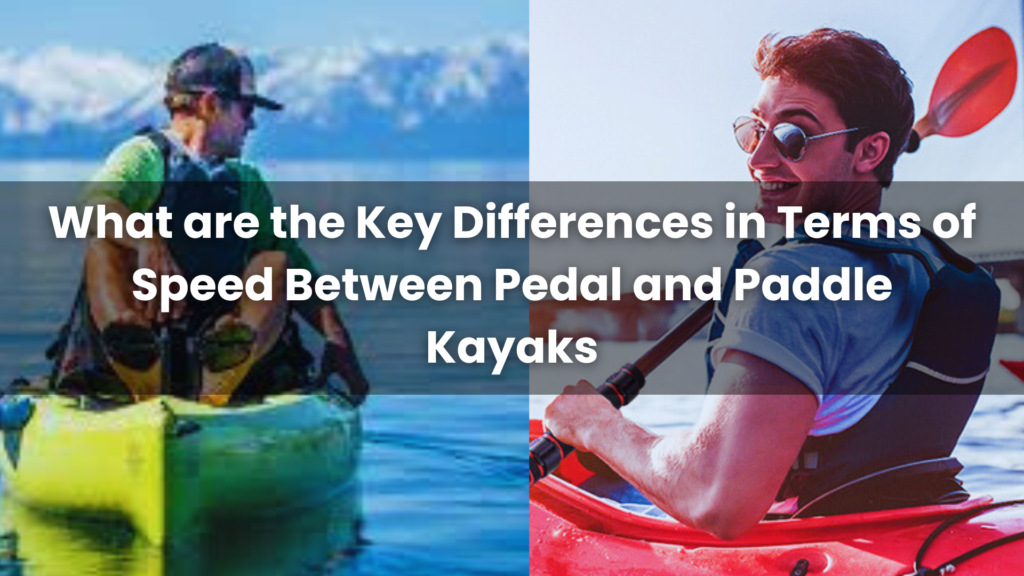
The key differences in speed between pedal and paddle kayaks are:
Pedal Kayak
Pedal kayaks are generally faster and more efficient than paddle kayaks. Pedal kayaks can maintain higher speeds with less physical exertion, as the leg muscles are stronger and more powerful than the arms.
The pedal-driven propulsion system in pedal kayaks allows for more efficient forward movement compared to the back-and-forth paddling motion of paddle kayaks.
Paddle Kayaks
Paddle kayaks are slower compared to pedal kayaks. The reliance on arm strength rather than leg power in paddle kayaks results in slower top speeds and less overall efficiency.
Paddle kayaks require more physical effort to maintain the same speeds as pedal kayaks, which can lead to fatigue more quickly on longer trips.
Pedal Kayak vs Paddle Speed
Pedal kayaks are better suited for covering large distances and open water. The increased speed and efficiency of pedal kayaks make them a better choice for kayakers who need to cover a lot of ground or navigate open bodies of water. Paddle kayaks may struggle to keep up the same pace over long distances compared to their pedal-powered counterparts.
What are the Most Popular Brands of Pedal and Paddle Kayaks
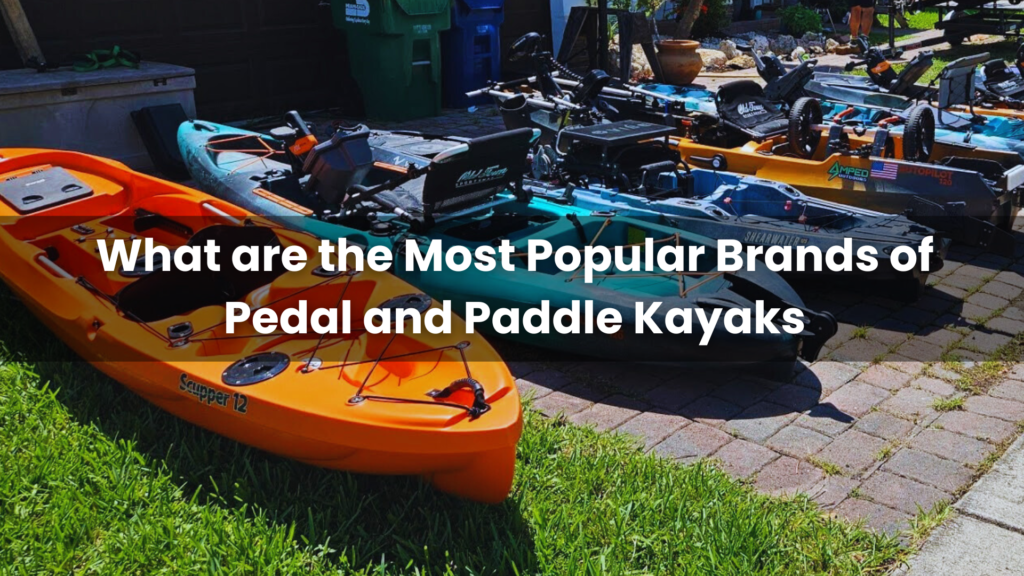
The most popular brands of pedal and paddle kayaks based on the provided sources are:
Pedal Kayaks
Hobie Cat Company: Pioneered the Mirage Drive pedal-operated fins that propel the kayak through the water.
Wilderness Systems: Known for producing high-quality pedal kayaks suitable for fishing, touring, and wildlife watching.
Old Town: Offers a range of pedal kayaks with innovative propulsion systems and features.
Brooklyn: Produces pedal kayaks with high weight capacity and durability.
Perception: Known for pedal kayaks designed for fishing and recreational use.
Paddle Kayaks
Wilderness Systems: Offers a variety of paddle kayaks suitable for different water conditions and paddling styles.
Perception: Produces paddle kayaks known for their stability, buoyancy, and maneuverability.
Old Town: Provides paddle kayaks with a focus on comfort, stability, and versatility.
Jackson Kayak: Offers paddle kayaks designed for fishing and recreational kayaking.
Native Watercraft: Known for producing paddle kayaks with innovative features and performance.
Conclusion
In the captivating world of kayaking, the decision between a pedal vs paddle kayak is a personal one that should be guided by your individual preferences, needs, and the type of aquatic adventures you envision. Both pedal and paddle kayaks offer unique benefits and considerations, and understanding the nuances between these two propulsion systems can help you make an informed choice that will elevate your time on the water.
Whether you are drawn to the speed and efficiency of a pedal kayak or the traditional charm and maneuverability of a paddle kayak, the most important thing is to embrace the beauty and serenity that the art of kayaking has to offer. So, whether you engage your pedals or wield your paddle, embark on your next kayaking expedition with confidence and excitement, and let the tranquil waters guide you on an unforgettable journey.
Frequently Asked Questions About Pedal vs Paddle Kayaks
What are the key differences in speed and efficiency between pedal and paddle kayaks?
Pedal kayaks are generally faster and more efficient than paddle kayaks. The pedal-driven propulsion system allows kayakers to leverage their stronger leg muscles, resulting in higher speeds and the ability to cover longer distances with less physical exertion compared to using a paddle.
What are the advantages of a pedal kayak over a paddle kayak?
The main advantages of pedal kayaks include hands-free operation, increased speed and efficiency, and reduced physical strain on the upper body. This makes them well-suited for activities like fishing, photography, and longer journeys.
What are the advantages of a paddle kayak over a pedal kayak?
Paddle kayaks offer better maneuverability in tight spaces and technical waterways, a more traditional kayaking experience, and a lower initial cost compared to pedal kayaks. They also require less maintenance and are generally more compact for storage and transportation.
Which type of kayak is better for fishing, a pedal or paddle kayak?
Both pedal and paddle kayaks have their advantages for fishing. Pedal kayaks allow for hands-free operation, which can be beneficial for tasks like baiting hooks or casting, while paddle kayaks offer better maneuverability in shallow or tight areas.
How do the maintenance and repair requirements differ between pedal and paddle kayaks?
Pedal kayaks typically have more complex mechanical systems, such as the pedal-driven propulsion mechanism, which can require more specialized maintenance and repairs compared to the relatively simple design of paddle kayaks.
What factors should I consider when choosing between a pedal or paddle kayak?
Key factors to consider include the type of water you’ll be kayaking on, your personal preferences and comfort level, budget, storage and transportation needs, and your skill level and experience in kayaking.
Is one type of kayak generally more expensive than the other?
Yes, pedal kayaks tend to have a higher initial cost compared to paddle kayaks, due to their more complex design and additional mechanical components.

Nigel Foster, born in 1952, is an esteemed sea kayaker, known for being the youngest to kayak around Iceland. His journey in kayaking started at 15 in Brighton, England. With a career beginning as a trainee instructor in Sussex, he later pursued teaching after attending Redland College, Bristol.
Foster’s notable expeditions include navigating the challenging waters of Newfoundland and the Hudson Strait. Despite facing intense conditions, his passion for kayaking never waned. He holds several British Canoe Union qualifications and has significantly contributed to the kayaking community through teaching and committee work.
In 1985, Foster expanded his horizons by assisting an expedition in Iceland and later founded his own kayaking business, sharing his expertise globally.
